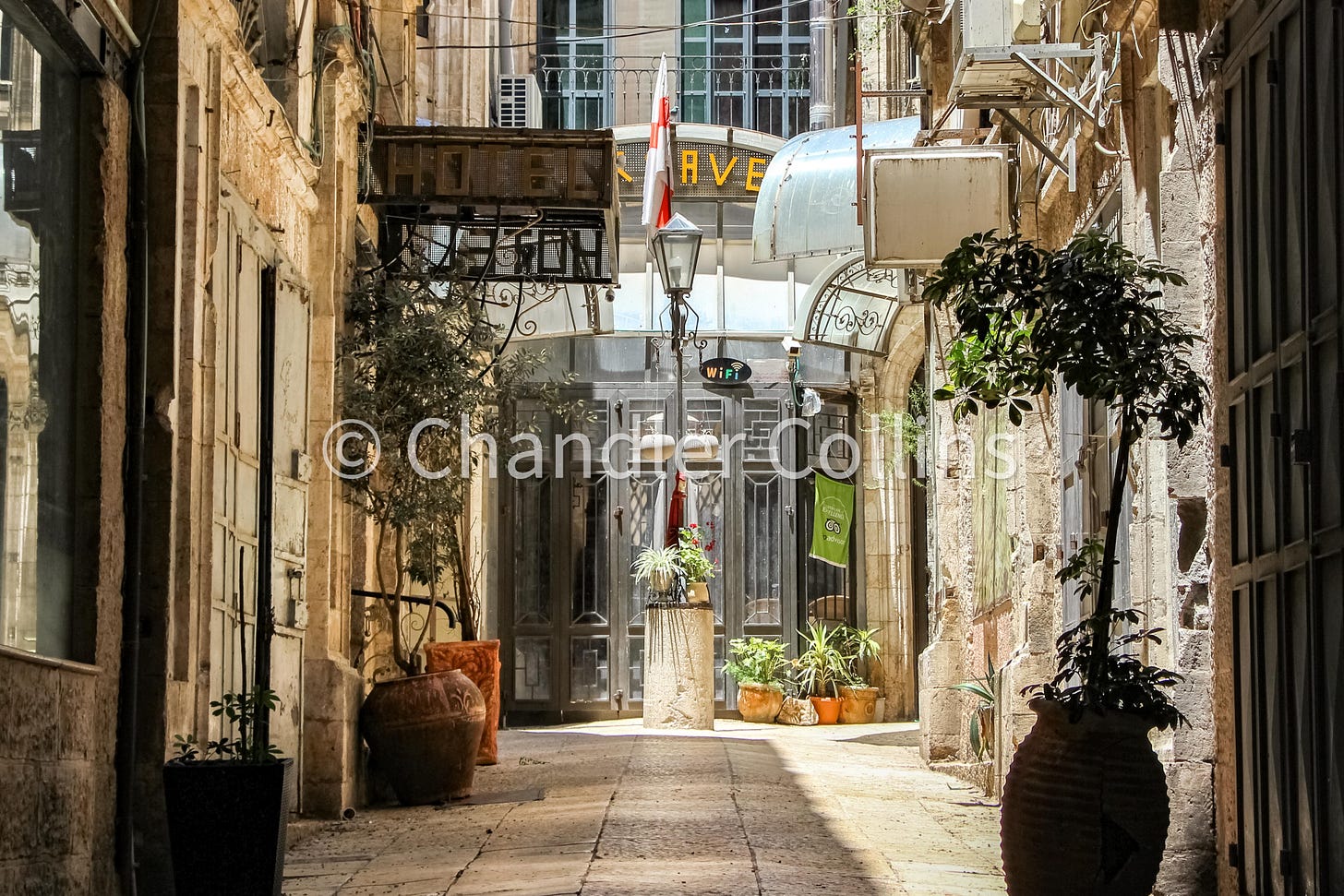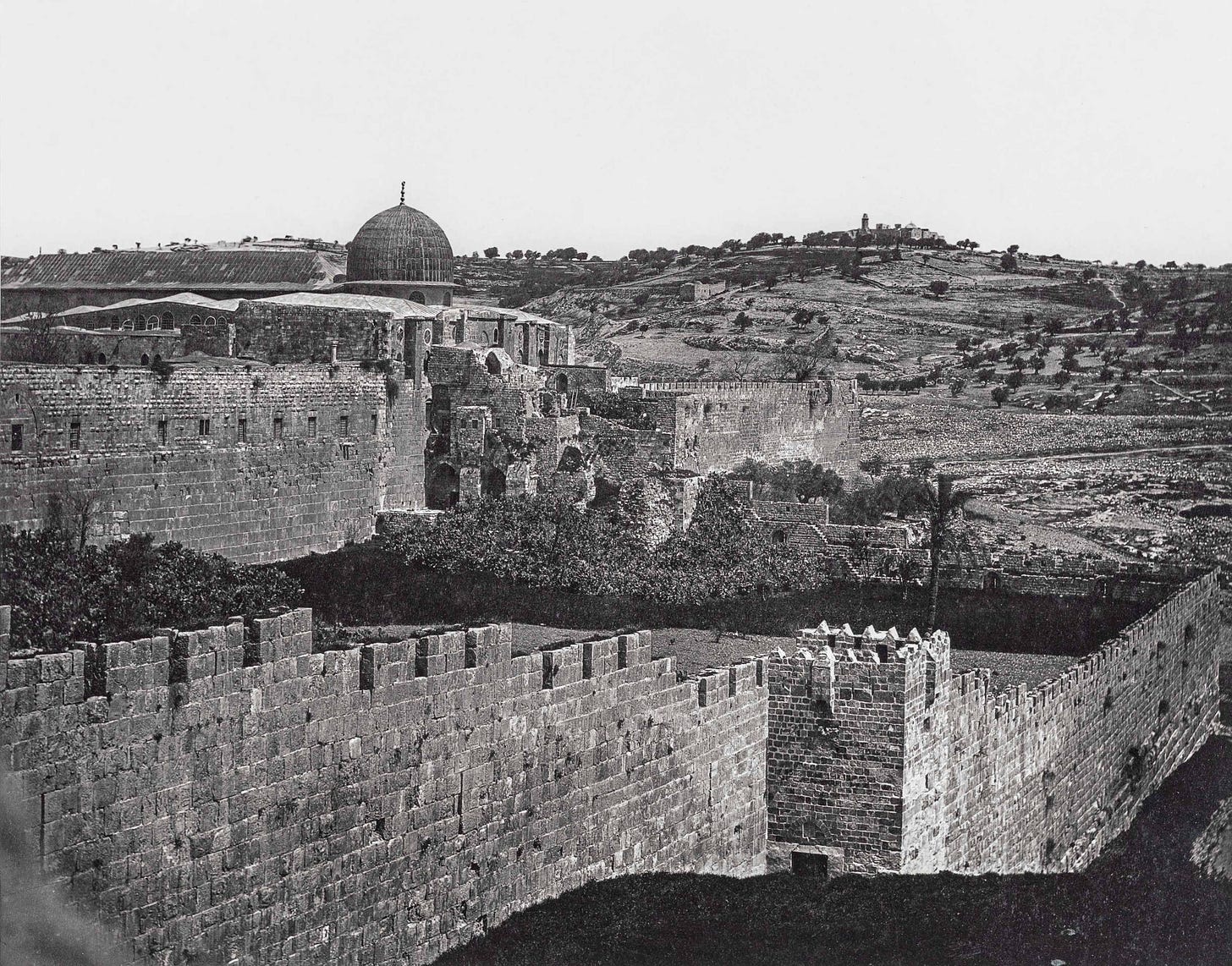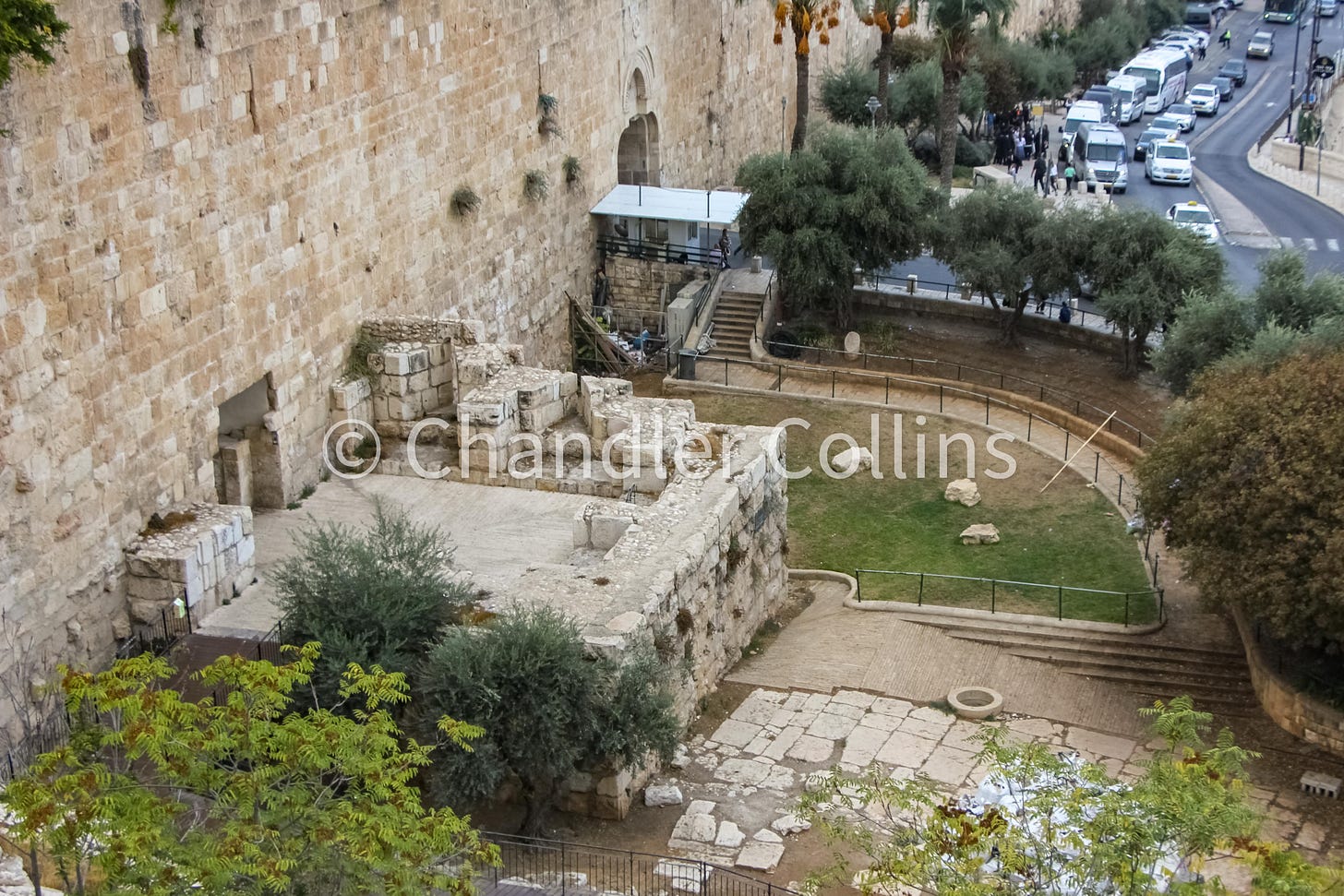Jerusalem in Brief (No. 2)
Kerosine street lamps, a historical photo of Dung Gate, Jerusalem's lighthouse, and one ridiculously expensive book
If you find this newsletter valuable, consider upgrading to a paid subscription
In this month’s edition of “Jerusalem in Brief” (published every second Friday), we’ll take a look at Avner Wishnitzer’s article about kerosine street lamps in Jerusalem at the end of the 19th century (“article summary”). The photographer Felice Beato captured a wonderful early photo of Dung Gate. We’ll highlight aspects of what can be seen in this photograph (“Jerusalem visualized”). A few final shorter entries round out this newsletter.
Article summary
The beginning of Jerusalem’s modernization during the second half of the 19th century has become a heavily explored theme in scholarship about this period, such as in Vincent Lemire’s book Jerusalem 1900. An article published in 2020 by Avner Wishnitzer, “Kerosine Nights: Light and Enlightenment in Late Ottoman Jerusalem,” discusses one aspect of this development that I have not seen elsewhere, that of kerosine street lamps.

What does this article discuss?
Wishnitzer’s 43-page article explores how Late Ottoman Jerusalem was transformed by the introduction of kerosine street lamps. He dubs the new experience of the city’s illuminated evenings the “kerosine night” (166). Wishnitzer surveys a number of issues surrounding this new technology in Jerusalem: the sources of kerosine and its importation through Palestine’s major ports, the installation of street lamps and subsequent creation of the city’s nightlife, the role of Jerusalem’s municipality in managing street lights, and their reception by the city’s residents. He compares this new system of street lamps to that of other cities, as well as to the prior situation in Jerusalem itself, where residents were required to carry lamps when they went out during the night (177).
Municipal records indicate that the first street lamps were set up inside the city wall beginning in the early 1890s and after 1904 in the new extramural neighborhoods (180). A number of factors were determinative for the quality of Jerusalem’s lighting system, including the city’s location away from the major Mediterranean ports and the municipality’s inability to raise sufficient tax revenue. This resulted in an ad hoc lighting system that was insufficient to properly illuminate the tight, meandering streets inside the city wall and even the public areas outside it (181). The lamps were burned irregularly and not often cleaned (183-184). Jerusalem’s new nocturnal reality encouraged unprecedented numbers of residents to enjoy the city nightlife, creating fresh opportunities for crime. Wishnitzer details several violent incidents and the safety concerns documented in newspapers of the time (198-202).
What does this article argue?
Wishnitzer argues that the attitude toward kerosine street lamps in Jerusalem was influenced by the city’s location on the periphery of the Ottoman Empire. On the one hand, the introduction of street lights gave a sense of command over the evening and natural order. As the title of the article suggests, the author contends that Jerusalemites made a conceptual connection between the street lamps and the idea of Enlightenment progress. Key quotes of figures such as Eliezer Ben-Yehuda indicate a perceived relationship between the physical street lights and metaphorical idea of waking up to a new reality: modernity (184-194).
The lamps also integrated Jerusalem with modernizing urban centers around the Ottoman Empire and Europe (168). Yet, the patchwork of dimly lit kerosine street lamps in Jerusalem emphasized the difference between it and other major cities that already boasted electric lighting (206). Hence, according to Wishnitzer, the introduction of kerosine lamps also introduced ideals of modernization that could not be quickly realized in a location like Jerusalem. These factors created a paradoxical sense of hope in Jerusalem’s progress among residents mixed with disappointment in their experience of reality.
Jerusalem maintains only a faint connection with its Late Ottoman legacy which was severed by the outbreak of World War I and ensuing British Mandate. Nonetheless, in reading this article, I could not help but reflect on its current hubs of nightlife: in enclaves along Jaffa Street and Machane Yehuda Market, in areas outside Damascus Gate and on al-Wad Street, especially during Ramadan, and throughout West Jerusalem on Motza’ei Shabbat, among others. Looking back to the time when street lamps were first introduced in the city prompts reflection on the very recent creation of modern nightlife and provides a fascinating angle through which to view Jerusalem’s history at the end of the Ottoman Period.
Jerusalem visualized

Felice Beato visited Jerusalem in March 1857 with his brother-in-law James Robertson (read more about Beato’s life and legacy here). Together they took some of the most important early photographs of the city, including this fantastic view of the southern wall and Noble Sanctuary, with the Mount of Olives in the background. While the Mosque of the Ascension is visible on top, none of the other major church buildings frequented by pilgrims and tourists today on the Mount of Olives had yet been built. Heavily damaged in the earthquake of 1927 and later repaired, the roof of the al-Aqsa Mosque in this photo appears slightly different than its present form.
In the foreground, we catch an important glimpse into a former iteration of Dung Gate. Sometime after the initial building of the city wall in the 1540s CE, an exterior gatehouse was attached (Tarragon 2022:123). Notice how the pointed crenelation at the top of the gatehouse is different than the style of the older city wall into which it was built. During the 1865 Ordnance Survey of Jerusalem under Charles Wilson, a bench mark was carved on its exterior. This gatehouse was removed at the end of the British Mandate Period, at which point the bench mark was lost (Tarragon 2022:132). Later, during the years of Divided Jerusalem (1948-1967), the Jordanians decided to widen the gate in order to allow traffic through (Murphy-O’Connor 2008:21). When in use during the time of the photograph, the gate functioned essentially as a postern, its small frame allowing only one person through at a time.
In Arabic the gate was called Bab al-Maghariba (spelled variously in the sources), a reference to the Mughrabi Quarter located inside the gate. This quarter was forcibly evicted and demolished in June 1967 in order to create a large plaza in front of the Western Wall. Aside from a small amount of visible architecture in the plaza, the Arabic name attached to this gate is one of the few remaining elements that preserves the historical memory of the Mughrabi Quarter.
Inside the walls are agricultural fields that were tended by residents of the nearby quarter. Western explorers who came to Jerusalem during this time took an intense interest in the area around the base of the Noble Sanctuary where large stones of the ancient Temple Mount retaining walls could be seen. Just ten years after this photo was taken, Charles Warren would arrive in Jerusalem and begin tunneling, among other places, at the base of these walls. During his first visit to Jerusalem in 1838, Edward Robinson noted the difficulty of climbing around the prickly pear fields in order to take measurements in this area.
Much that sits under the dirt in the photo has been uncovered since it was taken, such as the medieval Tanners’ Gate and gatehouse. Inside the walls is now home to the Davidson Archaeological Park where visitors can stand under Robinson’s Arch (just off the photo to the left) or ascend the southern steps of the Herodian Temple Mount (behind the city wall on the right), passing many mikve’ot (Jewish ritual baths) between the two landmarks. The entire footprint of this area was later covered by massive palaces of the Umayyad dynasty who also built the Dome of the Rock and al-Aqsa Mosque. The palaces, which indicate the importance of Jerusalem early in the history of Islam, partially incorporated the fallen stones from the Herodian platform as building material.

Notes & quotes
Standing in the open plaza around Jaffa Gate today, it is impossible for onlookers to know that a large clock tower once hovered above, keeping time for all of Jerusalem’s inhabitants. In his remarkable memoirs (mentioned in Wishnitzer’s article summarized above), Palestinian Jerusalemite and musician Wasif Jawhariyyeh (1898-1972) writes about this new addition to the city in this brief passage:
“When the clock tower was constructed on the wall of Jaffa Gate, the municipality had a gas lantern lamp hung on each of the clock tower's four sides. They were lit at night and could be seen from the villages, as well as from a long distance, transforming the clock tower into a lighthouse. Thus, we thanked the Lord for allowing us to see this invention in our city” (2014:39).
Internet standouts
An original 1856 publication of Jerusalem photographs by Auguste Salzmann is being sold for anyone who has a spare €45,000 sitting around!
Paid supporters
The next livestream for paid subscribers will take place on March 5 from 8:00-9:30 PM ET. Among other things, we’ll discuss the newest excavations at the Holy Sepulcher.
Are you having issues accessing your subscriber benefits? Reply to this email or contact me at approachingjerusalem@gmail.com.
Enjoy this post?
Show your appreciation by leaving a tip as low as the price of a cup of coffee.
Follow Approaching Jerusalem
View previous posts from this newsletter and follow us on social media for archaeological stories, upcoming lectures, and other Jerusalem-related news, resources, and analysis.

